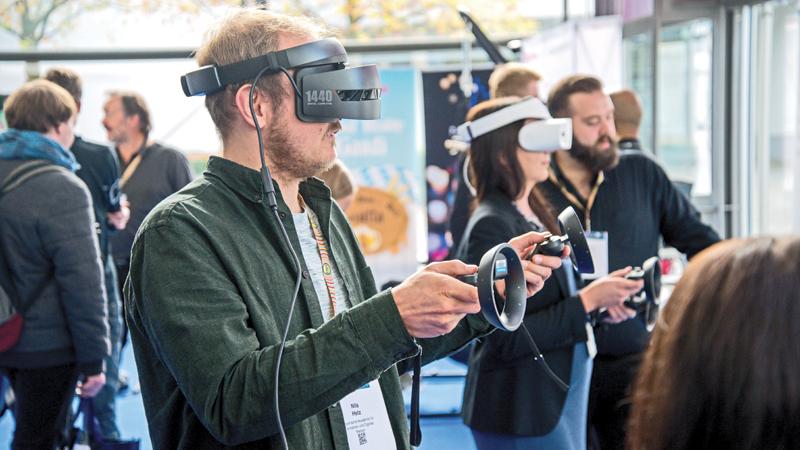
VR or virtual reality refers to computer generated simulation of a 3D environment. These simulations are usually navigated using a headset and some other devices that allow users to move around and interact with the simulated environment, which can be both realistic or completely fabricated. VR technology has a multitude of valuable applications in fields like education, medicine, psychology, engineering and business. However, by far the most popular application of VR tech has been for the purposes of entertainment, especially gaming and 3D Cinema.
The history of virtual reality technology is difficult to trace as the concept of an alternative existence was vaguely defined before the introduction of modern virtual reality. The first example of virtual reality technology actually being implemented came about in 1962, when American cinematographer Morton Heilig designed a prototype for a device called the ‘Sensorama’ that could simulate a cinematic experience that stimulated multiple senses such as smell and touch.
Direct precursor
 The first example of a head mounted display being used for virtual reality was just a few years later in 1968, when American computer scientist Ivan Sutherland created the Sword of Damocles with the help of his students. Though it was massive in size and could only display a simple wireframe environment, the Sword of Damocles could be considered a direct precursor to modern virtual reality hardware. Despite these advancements, the term ‘virtual reality’ wouldn’t be coined until much later during the 80’s by Jaron Lanier, founder of VPL Research, a pioneer in affordable VR.
The first example of a head mounted display being used for virtual reality was just a few years later in 1968, when American computer scientist Ivan Sutherland created the Sword of Damocles with the help of his students. Though it was massive in size and could only display a simple wireframe environment, the Sword of Damocles could be considered a direct precursor to modern virtual reality hardware. Despite these advancements, the term ‘virtual reality’ wouldn’t be coined until much later during the 80’s by Jaron Lanier, founder of VPL Research, a pioneer in affordable VR.
Since the first developments of virtual reality, the technology was primarily used in professional environments and usually for training purposes. But the first popular example of a commercially available virtual reality product was the infamous Power Glove, a controller accessory to the popular home gaming console, the Nintendo Entertainment System or NES.
While it was functional and sold nearly a million units, the Power Glove was a massive failure due to its unreliable controls. The games that supported it also never sold well as it came separate from the Power Glove. The 90s also produced several examples of early VR technology that was made for the public, including the unreleased Sega VR headset, the Sega VR-1 motion simulator arcade ride attraction and Nintendo’s Virtual Boy headset. None of these products were well received, and were perceived as gimmicky.
Possibly as a result of the poor reception of early virtual reality products, the public had lost interest in VR and while a few new advancements in the technology would pop up, no more new commercially available virtual reality products were developed until the 2010s. The first and most prominent of which was the Oculus Rift.
American entrepreneur Palmer Luckey, single handedly revived public interest in virtual reality with his crowd-funded prototype VR headset. Since the success of the Oculus Rift, a large number of new developers came forward with their own VR hardware, such as HTC, Valve and even Playstation.
However, the market for VR is still relatively young, with no real big hitters currently in the space besides Oculus. While many popular VR games and apps have been developed, like Superhot VR and Beat Saber, VR did not receive the triple A treatment until Valve released the highly anticipated latest installment of their Half Life series, Half-Life: Alyx, exclusively on VR for any PC supported VR device. Now, especially with people restricted to their homes by the Covid-19 pandemic, VR technology is predicted to see exponential growth in the coming years.

